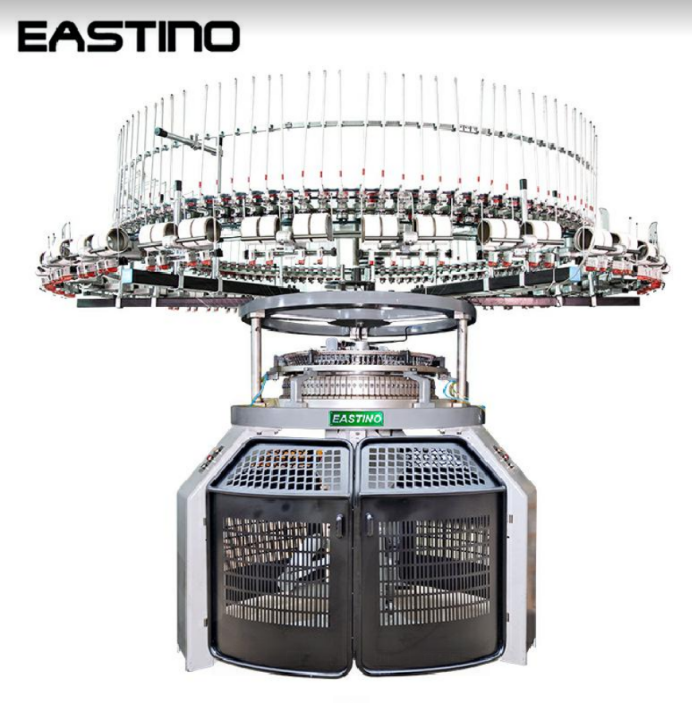
What Is a Circular Knitting Machine?
A circular knitting machine is an industrial platform that uses a rotating needle cylinder to build seamless tubular fabrics at high speed. Because the needles travel in a continuous circle, manufacturers get eye-popping productivity, uniform loop formation, and diameters that range from a few inches (think medical tubing) to more than five feet (for king-size mattress ticking). From basic T-shirts to three-dimensional spacer knits for running shoes, circular knitting machines cover a vast product spectrum.
Core Components and How They Work
At the heart of every circular knitter sits a steel cylinder bristling with latch, compound, or spring needles. Precision-ground cams push those needles up and down; when a needle rises, its latch flips open, and on the downstroke it closes, drawing the new yarn through the previous loop to knit a stitch. Yarn enters through feeders that hold tension to within a couple of grams—too loose and you get loop distortion, too tight and you pop spandex. Premium machines close the loop with electronic tension sensors that adjust brakes in real time, letting mills switch from silky 60-denier microfiber to 1,000-denier polyester without touching a wrench.
Main Machine Categories
Single-jersey machines hold one set of needles and produce lightweight fabrics that curl at the edges—classic tee material. Gauges span from E18 (coarse) to E40 (micro-fine), and a 30-inch, 34-feeder model can spin out roughly 900 pounds in 24 hours.
Double-jersey machines add a dial full of opposing needles, enabling interlock, rib, and Milano structures that stay flat and resist laddering. They’re the go-to choice for sweatshirts, leggings, and mattress covers.
Specialty circular knitters branch into terry loopers for towels, three-thread fleece machines for brushed French terry , and electronic jacquard units that drop up to sixteen colors per course for photorealistic prints. Spacer-fabric machines sandwich monofilaments between two needle beds to make breathable cushioning layers for sneakers, office chairs, and orthopedic braces.
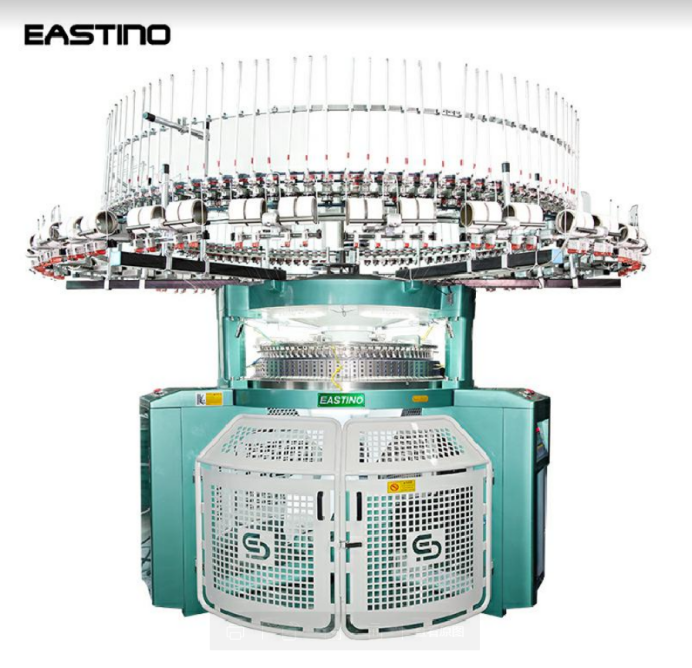
Key Technical Specs in Plain English
|
Spec |
Typical Range |
Why It Matters |
| Cylinder diameter | 3″–60″ | Wider fabric, higher pounds per hour |
| Gauge (needles per inch) | E18–E40 | Higher gauge = finer, lighter fabric |
| Feeders/tracks | 8–72 | More feeders lift speed and color versatility |
| Max rotational speed | 400–1,200 rpm | Directly drives output—but watch heat build-up |
| Power consumption | 0.7–1.1 kWh per kilo | Core metric for cost and carbon calculations |
Fabric Profiles and End-Use Sweet Spots
Plain jersey, piqué, and eyelet mesh dominate performance tops and athleisure. Double-jersey lines turn out rib cuffs, plush interlock babywear, and reversible yoga fabrics. Three-thread fleece machines tack an in-laid face yarn onto a looped base that brushes into sweatshirt fluff. Spacer knits replace foam in modern running shoes because they breathe and can be molded into ergonomic shapes. Medical tubing crews lean on micro-cylinders to knit elastic bandages with gentle, uniform compression.
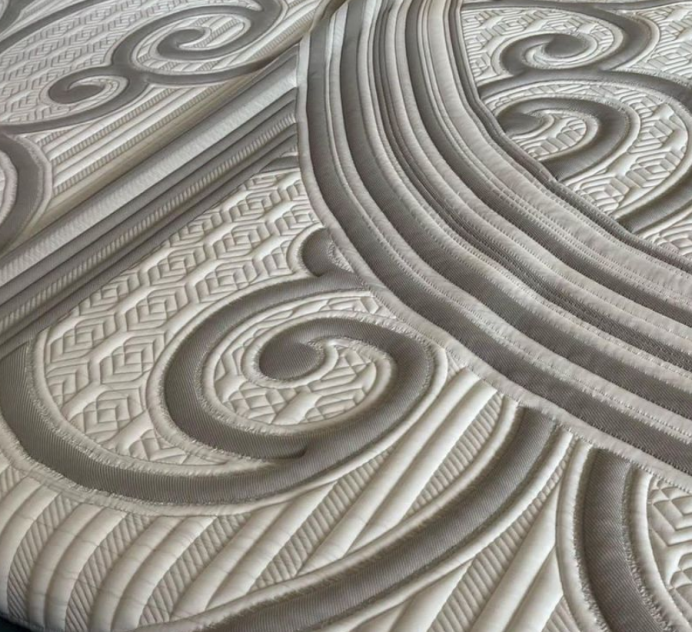
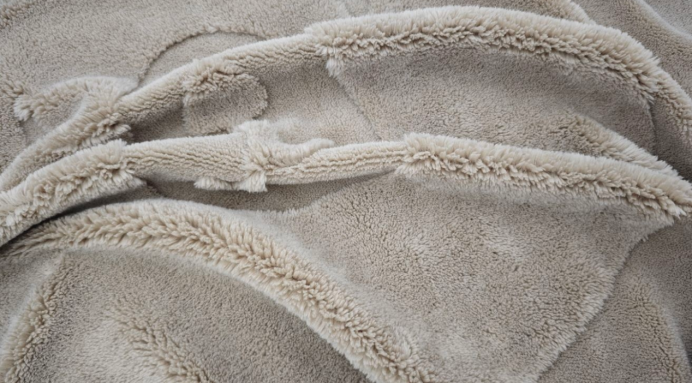

Buying a Machine: Dollars and Data
A mid-range 34-inch single-jersey unit starts around $120 K; a fully loaded electronic jacquard can break $350 K. Don’t just chase sticker price—grill the OEM on kilowatt hours per kilo, downtime history, and local parts supply. A slipped take-up clutch during peak season can torch margins faster than you can say “open width.” Make sure the control cabinet speaks OPC-UA or MQTT so every sensor can feed your MES or ERP dashboard. Mills that digitize knitting floors typically cut unplanned stops by double digits within the first year.
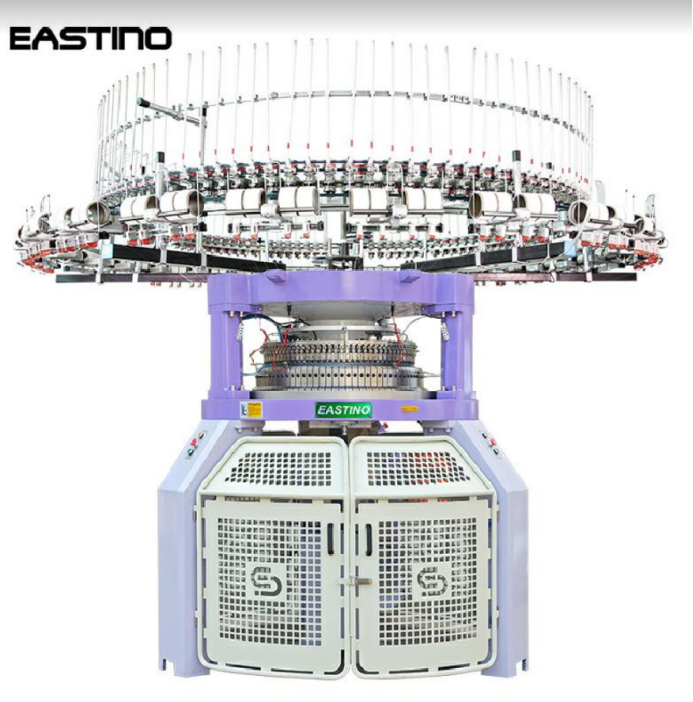
Operating Best Practices
Lubrication—Run ISO VG22 oil in cooler months and VG32 when the shop hits 80 °F. Change needle-bed bearings every 8,000 hours.
Needle health—Swap damaged latch needles immediately; one burr can stain hundreds of yards with dropped courses.
Environment—Shoot for 72 ± 2 °F and 55–65 % RH. Proper humidity slashes static cling and random spandex snaps.
Cleaning—Blow down cams at every shift change, vacuum lint off the frame, and schedule weekly solvent wipe-downs; a dirty cam track is a skipped stitch waiting to happen.
Software updates—Keep your pattern-control firmware current. New releases often fix hidden timing bugs and add energy-optimization routines.
Sustainability and the Next Tech Wave
Brands now trace Scope 3 emissions down to individual machines. OEMs answer with servo drives that sip less than a kilowatt per kilo and magnetic-levitation motors that drop noise to the high-70 dB range—nice on the factory floor and on your ISO 45001 audit. Titanium-nitride-coated cams handle recycled PET yarns without fraying them, while AI-driven vision systems scan every square inch as fabric leaves the take-down rollers, flagging oil spots or loop distortion before inspectors ever see a flaw.
Final Takeaway
Circular knitting machines sit right where mechanical precision meets digital smarts and fast-fashion agility. Understand the mechanics, pick the right diameter and gauge for your product mix, and lean into predictive maintenance fueled by IoT data. Do that, and you’ll lift yield, cut energy bills, and stay inside tightening sustainability guardrails. Whether you’re scaling a streetwear startup or rebooting a legacy mill, today’s circular knitters deliver the speed, flexibility, and connectivity to keep you ahead in the global textile game.
Post time: Jun-09-2025
